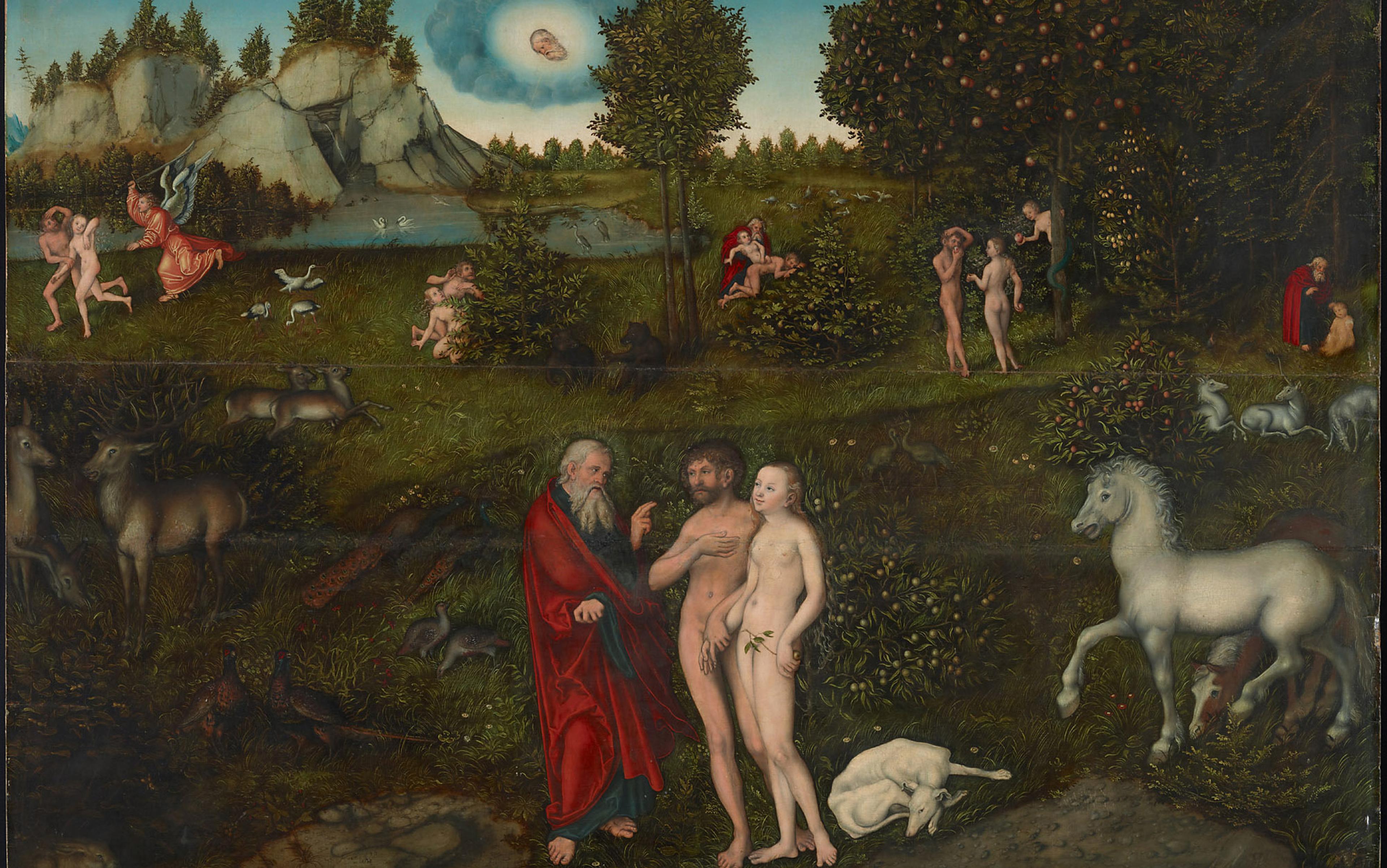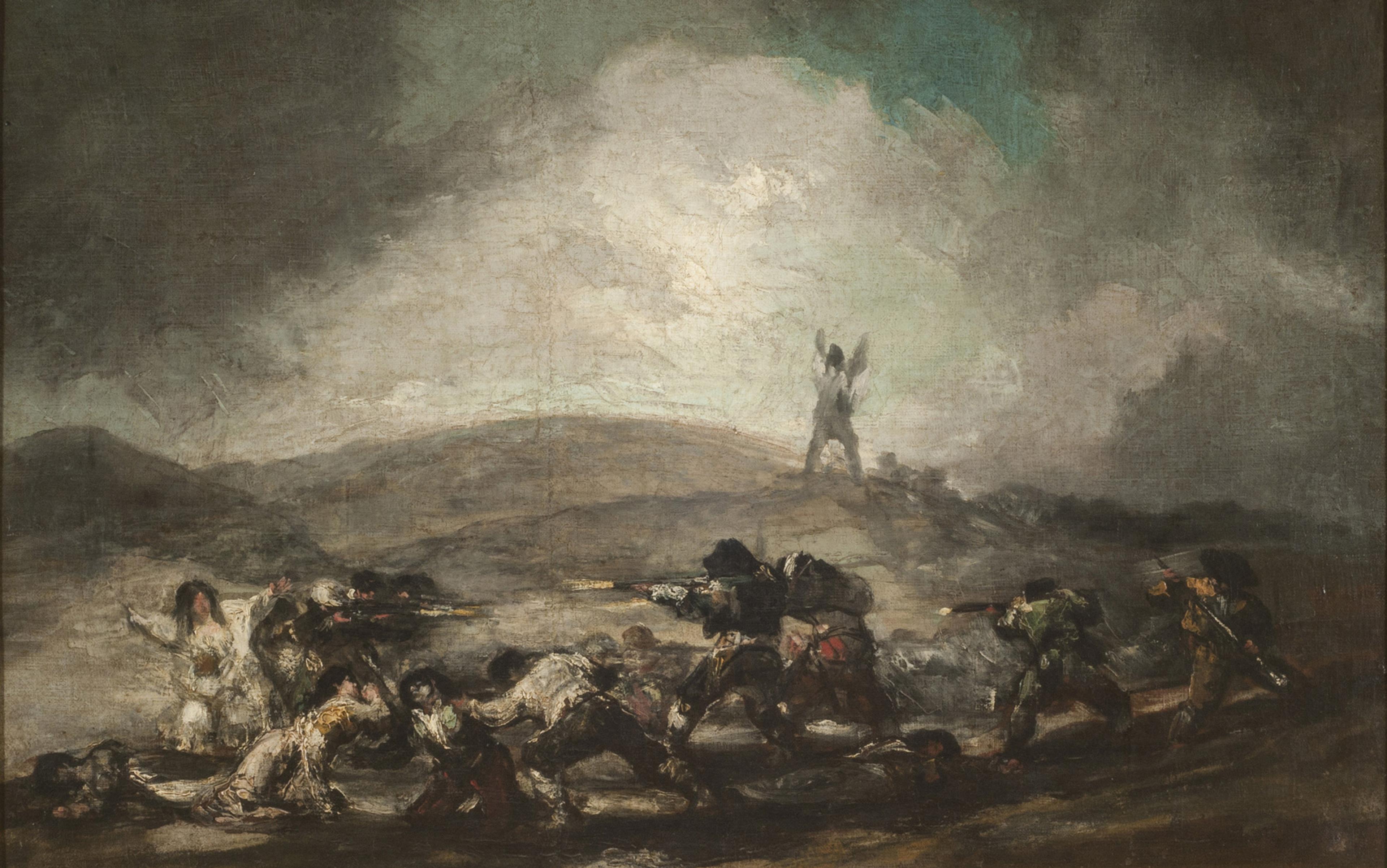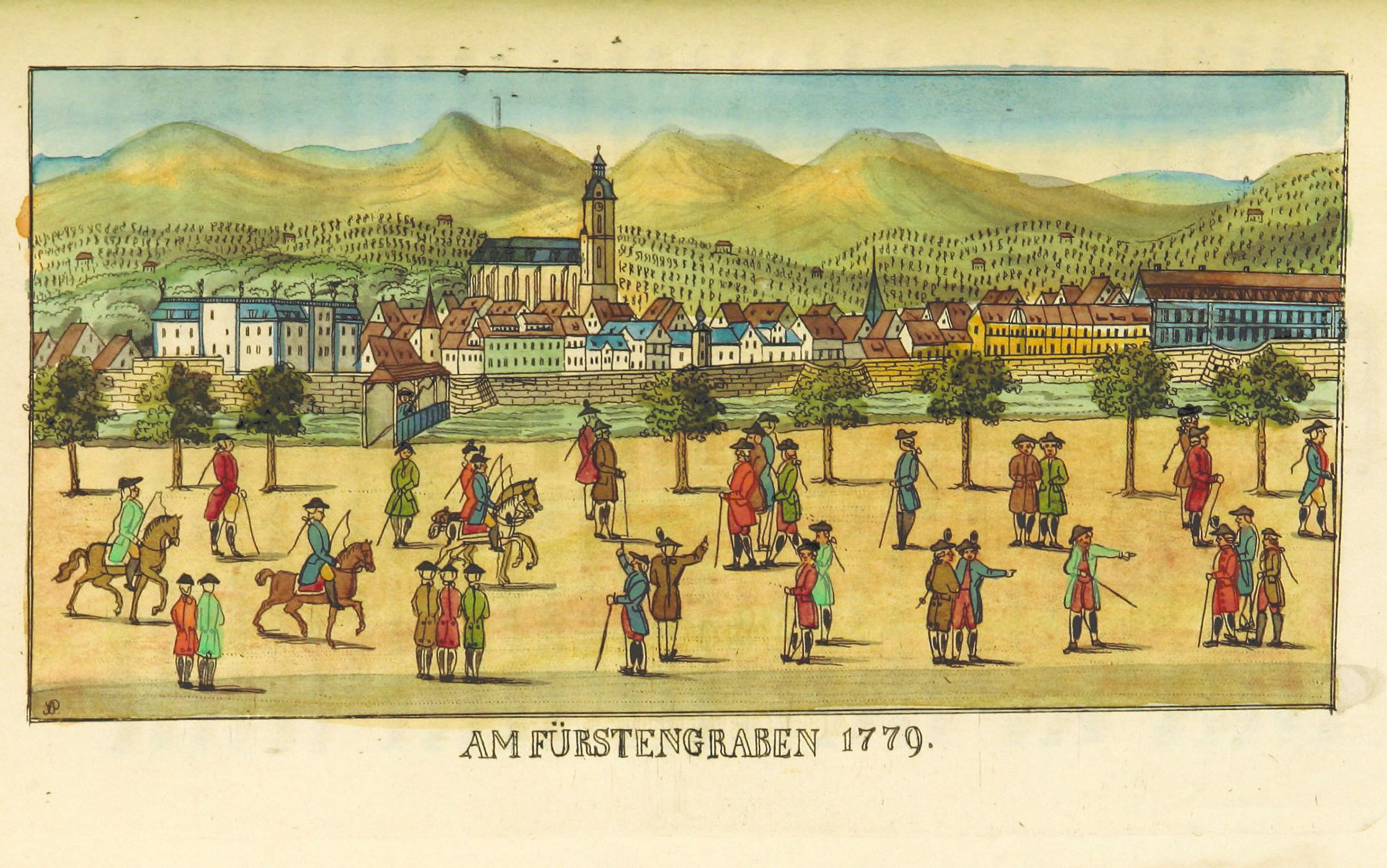Samuel Taylor Coleridge (1772-1834) stands tall in the cultural pantheon for his poetry. It’s less well known that in his own lifetime, and in the decades following his death, this canonical poet had an equal reputation as a philosopher. His published works containing much of his philosophical prose span from The Statesman’s Manual (1816), which set out his theory of imagination and symbolism; Biographia Literaria (1817), one of the great and founding works of literary criticism; The Friend (1818), which includes his philosophical ‘Essays on the Principles of Method’; Aids to Reflection (1825), where he expounds his religious philosophy of transcendence; and On the Constitution of the Church and the State (1829), which presents his political philosophy.
The effect of those last two books was so impressive that John Stuart Mill named Coleridge as one of the two great British philosophers of the age – the other being Jeremy Bentham, Coleridge’s polar opposite. His thinking was also at the root of the Broad Church Anglican movement, a major influence on F D Maurice’s Christian socialism, and the main source for American Transcendentalism. Ralph Waldo Emerson visited Coleridge in 1832, and John Dewey, the leading pragmatist philosopher, called Coleridge’s Aids to Reflection ‘my first Bible’.
Yet philosophical fortunes change. The almost-total eclipse of British idealism by the rise of analytic philosophy saw a general decline in Coleridge’s philosophical stock. His philosophy languished while his verse rose. Coleridge’s poetry resonated with the psychedelia of the 1960s and a general cultural shift that emphasised the value of the imagination and a more holistic view of the human place within nature. Today, Coleridge is far more often remembered as a poet than a philosopher. But his philosophy was spectacular in its originality and syntheses.
Although Coleridge wrote poetry throughout his life, his energies increasingly channelled towards philosophy. Drawing from neo-Platonism, the ingenious but difficult transcendental idealism of Immanuel Kant, and the even obscurer intricacies of post-Kantians such as J G Fichte and F W J Schelling, his philosophy was undoubtedly of the difficult metaphysical kind, very much at odds with practically minded British empiricism. Lord Byron spoke for many when he described Coleridge:
Explaining Metaphysics to the nation –
I wish he would explain his Explanation.
Yet the British empiricism of John Locke, David Hume and David Hartley was itself at odds, Coleridge pointed out, with a deeper heritage of British thought. ‘Let England be,’ he pronounced, ‘Sidney, Shakespeare, Spenser, Milton, Bacon, Harrington, Swift, Wordsworth’, who represent the idealising and proto-romantic tradition that he identified as ‘the spiritual platonic old England’. Coleridge rallied that ‘spiritual platonic’ tradition to oppose the philosophies of empiricists and hard-headed expounders of ‘common-sense’ such as Samuel Johnson, Erasmus Darwin, Hume, Joseph Priestley, William Paley and William Pitt, ‘with Locke at the head of the Philosophers and [Alexander] Pope of the Poets’.
Without denigrating commercial and industrial success, Coleridge argued that the haste for economic improvement led to a decline in culture, tradition and spiritual wellbeing. Identifying ‘civilisation’ with the forces of economic and technological progression, and ‘cultivation’ with the deeper roots of spiritual connection, tradition and permanence, he warned of producing a society that was ‘varnished rather than polished; perilously over-civilised, and most pitiably uncultivated!’ This concern with cultivation was an important tenet in what Mill called the ‘Germano-Coleridgian’ school, which examined what the empiricists, utilitarians and materialist mechanists tended to overlook: the historical development and the socially and psychologically significant meanings embedded in religion, tradition and cultural symbolism.
Mill’s recognition of this difference foreshadows what would become the analytic-Continental divide between Anglophone philosophy, focused on discrete analysis meant to clarify problems, and the more historically and theoretically ambitious, synthesising approaches that began with those philosophers following Kant, such as Schelling and G W F Hegel. This ‘Germano-Coleridgian’ approach was in stark contrast to British utilitarianism, which reduced ethics to Bentham’s principle of utility. In the culture wars of his day, Coleridge championed cultural and spiritual concerns, and opposed the ethical elevation of sensual pleasure, and the reduction of that and everything else to base matter.
Coleridge similarly sided with the supporters of the spiritual and transcendent against those who maintained the reality of the material and immanent only. In this way, he took part in the ‘Pantheism Controversy’ that raged primarily across German philosophy in the late 18th and early 19th centuries. Coleridge argued for the transcendence of God rather than holding, with Baruch Spinoza, that God is a wholly immanent power identified with the natural world. Characteristically of Coleridge, however, he didn’t dismiss Spinozistic arguments, but adopted parts of them to fit within what he saw as a wider whole. ‘Spinoza’s is … true philosophy,’ he wrote, ‘but it is the Skeleton of the Truth.’ It needed to be fleshed out in order to let ‘the dry Bones live’.
Coleridge’s thinking provides a bridge between materialist and dynamic views in the sciences
This inclusive attitude is one of the strengths of Coleridge’s approach, which grew from his celebrated powers of synthesis. Seeing polarised debates as revealing an interdependent whole, he tried to embrace the views of his philosophical opponents, rather than simply dismiss them. He saw dichotomous or binary thinking (B versus C) as merely disputative, whereas a broader trichotomy (B versus C within a broader unity of A) presented a unified whole as the higher ideal that fierce yet dependent polar opposition imperfectly represents. The view of a higher union of opposites leads to reasoning, while binary thinking leads merely to arguing.
Beyond the ‘cultivating’ merits of Coleridgean synthesis, it’s also valuable to delve into the content of his philosophy. Over the past 15 years, philosophers have been attending to what Anna Marmodoro calls ‘the metaphysics of powers’ and, since Albert Einstein’s theories of relativity and the later quantum theory, most philosophers and physicists agree that forces and fields of force are more fundamental than matter, which is no longer held to be the atomistic ne plus ultra it was often thought to be. Notably, Isaac Newton refused to reduce the force of gravitation to something that is itself material, leaving it as one of those dark mysteries that we must simply observe and accept without fully understanding.
Without denying physical matter, Coleridge contended against what he saw as abject materialism, which reduced all qualities to quantity and collapsed physical forces into matter. On this point, history now sides with Coleridge against the materialists, and philosophers sympathetic with the intent of materialism now generally identify not with ‘materialism’ but with ‘physicalism’, or the view that the fundamental components of the Universe are whatever physics will eventually conclude they are. Current thinking in quantum physics construes these elements as fundamental forces, which Coleridge himself argued.
An understanding of Coleridge’s thinking, then, provides insight into the beginnings of the analytic-Continental divide and a bridge between materialist and dynamic (powers-based) views in the sciences. It also illuminates Coleridge’s poetry as the expression of a unified view of the world not as mere matter clumping together in happy coincidence, but as the evolution of the power of ideas in a world of dynamically forged syntheses that resound back to the powers from which these creative forces arose.
‘In Xanadu did Kubla Khan / A stately pleasure-dome decree …’ So begins Coleridge’s poem on the power of words and imagination in physical and poetic creation. Echoing how the mighty potentate creates with an imperious fiat, the inspired poet, we’re told, could ‘build that dome in air’ in an explosively constructive fusion of opposites – ‘[t]hat sunny dome! those caves of ice!’ It’s a creation with more astonishing magic than even the worldly power of the Khan could muster:
And all should cry, Beware! Beware!
His flashing eyes, his floating hair!
Weave a circle round him thrice,
And close your eyes with holy dread,
For he on honey-dew hath fed,
And drank the milk of Paradise.
Though unpublished till 1816, Kubla Khan was written between 1797 and 1799, around Coleridge’s annus mirabilis of 1797-98, when he also wrote his supernatural poem The Rime of the Ancient Mariner, the daemonic Christabel, and some of the greatest of what he called his ‘Meditative Poems in Blank Verse’. One of those poems, the sublime ‘Frost at Midnight’, describes the beauties of nature – ‘lakes and shores / And mountain crags’ – as incarnations of the divine word, being ‘The lovely shapes and sounds intelligible / Of that eternal language, which thy God / Utters’. That poem ends on the achingly beautiful, mysterious note of ‘the secret ministry of frost’ that will, if the night gets colder, hang up the thaw-drops from the eaves ‘in silent icicles, / Quietly shining to the quiet Moon.’
Coleridge’s interconnecting themes are: the power of the creative word, in both worldly and poetic construction, echoing the divine word; nature as the living alphabet of God, only dimly understood in human knowledge; ideas as metaphysical essences and powers that pre-exist the physical world; and the notion of the earthly reflecting the ideal, as the icicles shine to the moon, itself reflecting the otherwise unseen light, at night, of an unseen sun. These are all themes that Coleridge developed in his philosophical writings until his death in 1834.
As a young man, Coleridge drew much from David Hartley’s associationist theory of mind. Like Hartley, young Coleridge wanted to trace the paths from root nerves and stimuli to an ever-increasing and sublime spirituality. This became entwined for him with a longer-lasting respect for the philosophy of Spinoza, who saw mind and matter as the only attributes we can perceive of the infinite being he called deus sive natura (God or nature). Aged 22, Coleridge declared:
I am a complete Necessitarian – and understand the subject as well almost as Hartley himself – but I go farther … and believe the corporeality of thought – namely, that it is motion.
Associationists viewed the mind as built up from immediate sensations, whose traces then recall and modify each other in constructing maps of experience – a kind of mental atomism. Although he’d soon give up materialistic psychology, he retained associationism as a theory of how animal and human mind begin to get organised. Coleridge accepted what he saw as its ‘half-truth’ in explaining much of mental activity at the levels of sensation, desire and the early awakenings of understanding. The essentially deterministic theory, however, left little if any room for human freedom. How could this theory of an automatic, irrational, desire-centred mind work so well at explaining the elementary functions of thought and perception yet utterly contradict the experiences, indeed the very possibility, of freedom, responsibility, and the pursuit of higher purposes? His answer would allow him to go beyond the notion of the ‘corporeality of thought’ while staying with the theory of it as ‘motion’, as he developed a view of mind as arising out of the interplay of opposed energies and functioning in a system of dynamics, or elementary forces.
It’s only when we’re self-consciously aware of ideas that we’re fully awake
Before delving deeper into Coleridge’s ‘polar philosophy’, we need a clearer picture of what he meant by ‘ideas’. For him, polar opposition derives from the energy of ideas conceived subjectively, as ‘universal ideas’, or objectively, as ‘cosmic laws’. His universal ideas relate to moral truths, history and the ‘humane sciences’, while the cosmic laws refer to the laws of nature and the physical sciences. Coleridge’s notion of ‘ideas’ is akin to the Platonic ideas, such as Goodness, Truth, Beauty, Justice and so on. From 1818 onwards, he gave a number of lists of such ideas, including:
the Ideas of Being, Form, Life, the Reason, the Law of Conscience, Freedom, Immortality, God!
… ideas, (NB not images) as the theorems of a point, a line, a circle, in Mathematics; and of Justice, Holiness, Free-Will, &c in Morals.
and:
eternity … Will, Being, Intelligence, and communicative Life, Love, and Action … without change, without succession.
The ability to intuit and behold transcendent ideas, he argued, is what proves that ‘we are born with the god-like faculty of Reason’, adding that ‘it is the business of life to develop and apply it’, since these ideas:
constitute … humanity. For try to conceive a man without the ideas of God, eternity, freedom, will, absolute truth, of the good, the true, the beautiful, the infinite. An animal endowed with a memory of appearances and of facts might remain. But the man will have vanished, and you have instead a creature, ‘more subtile than any beast of the field, but likewise cursed above every beast of the field …’
Coleridge became fascinated with the notion of universal truth as a realm of ‘eternal verities’ that originate and endure in some kind of cosmic reason. This ‘reason’ he saw as underlying the fabric of the Universe and corresponding to both the universal Logos of Heraclitus and the divine Logos of St John. While Heraclitus is known for his view of a world in such constant flux that we can’t step into the same river twice, he’s also the philosopher who conceived of a universal Logos, the all-encompassing order that allows a coherent and rational reality to exist from what would otherwise be a swirling chaos. The Logos of St John is the Word that was with God in the beginning, which was and is God. It’s the spiritual heart of reality that entered into its own creation by becoming flesh, becoming the light of the world, if only the darkness could comprehend it.
To Coleridge, these notions of Logos became united as the living mind in which the ideas as truths and powers reside. In some ways similar to the grand systems of Schelling and Hegel, these ideas gradually become realised through human thoughts and actions via inspiration, imagination and contemplation. Coleridge defined the imagination in its fundamental sense as ‘the living Power and prime Agent of all human Perception, and as a repetition in the finite mind of the eternal act of creation in the infinite I Am.’ In this view, human artistic creativity, scientific discovery and philosophical insight share in an attenuated form of the original, divine power of creation by virtue of being able to attend in imagination to ideas, or symbols of ideas, of ultimate reality. Everything that exists owes its being to the ideas. Nature, though charged with ideas, is sleeping; animal life, sleepwalking; with most of human life in a slightly higher state of dreaming. It’s only when we’re self-consciously aware of ideas that we’re fully awake. As Coleridge described the sway of ideas in 1827, ‘all live in their power – the Idea working in them’, but only ‘the Fewest among the Few … live in their Light’.
All phenomena in nature and human history are symbolic appearances that reunite a clash of elementary forces
Conceiving of these ultimate and eternal powers as ‘ideas’ subjectively (as fundamental to mind) and as ‘laws’ objectively (as fundamental to world), Coleridge placed at the heart of his philosophy a theory of powers beyond the human mind but accessible to it in contemplation, imagination and in vague intuitions. These ‘living and life-producing Ideas’ were ‘essentially one with the germinal causes in Nature’. In an intriguing consequence of his theory of ideas, he didn’t dismiss physical matter as mere appearance or abstract concept with no corresponding reality beyond subjective experience. Rather, as Coleridge saw it, matter is a synthesis that arises out of the opposition of the fundamental forces of existence. It’s the elementary forces that are primal, and the matter that arises out of them is the efflorescence in which we take part, only dimly aware that we’re ‘connected with master-currents below the surface’.
Broader and deeper than any idealism that would do away with matter as an illusion or an abstraction, Coleridge retained it within his system, much as he’d done with associationism in the theory of mind. Thus, as he wrote in 1817, he saw it essential to:
consider matter as a Product – coagulum spiritûs [the coagulation of spirit], the pause, by interpenetration, of opposite energies – … while I hold no matter as real otherwise than as the copula [or synthesis] of these energies, consequently no matter without Spirit, I teach on the other hand a real existence of a spiritual World without a material.
From what Coleridge described as ‘the universal Law of Polarity’ follows the actualisation of all subsequent existence in the form of metaphysical powers and forces of nature. Coleridge’s cosmology, like Schelling’s metaphysics, was part of a post-Kantian movement of organic philosophy of nature that saw itself as opposed to atomism and associationism, and which was very much a metaphysics of powers that found deep consonance with Coleridge’s developing view of mind and the senses. From the principle of polar opposition springs not only history, but all matter and all phenomena. In 1818, Coleridge defined this law as follows:
Every Power in Nature and in Spirit must evolve an opposite, as the sole means and condition of its manifestation: and all opposition is a tendency to re-union.
In a lineage from Kant, to Fichte, then Schelling, and soon to be furthered by Hegel, the principle of polar opposition was made into a tripartite logic, which Fichte was the first to describe as the progression through thesis, antithesis and synthesis, itself becoming a new thesis, thus continuing the evolution. Coleridge developed this into a ‘pentadic’ (or five-fold) logic, with the addition of the ‘prothesis’, as the originary idea that the thesis and antithesis manifest as opposite poles, and the ‘indifference point’, the midpoint between both thesis and antithesis. For Coleridge, synthesis is the resolution of opposed forces into the material phenomena of experience. All phenomena in nature and in human history are symbolic appearances that reunite a deeper clash of elementary forces.
To Coleridge, the opposition of reason to sense was a fundamental polarity in the mind that demonstrates the polar dynamics of the cosmos. Following Kant, he construed reason as essentially free, guided by truth and higher values rather than impulses and associations. This tug-of-war between reason and sense stretches the mind both ‘up’, into abstract truths and the realm of freedom, compassion and humanity, and ‘down’, into sensuality, self-interest and the realm of nature. The lower mind is necessary for the higher, which depends on the former for nutrition, physical safety and the basics of society. Nonetheless, the dynamic is marked by a hierarchy: sense can evolve towards reason, but the truths of reason aren’t similarly transformed by sense and basic impulses. The middle position, generated by the opposed dyad of sense ‘below’ and reason ‘above’, is the understanding, which is partly a reflection in the human mind of the universal reason (or Logos) yearning after science, art and social progress, and partly the rationally self-interested schemer that sets itself to satisfy our natural desires. With this dynamic, Coleridge felt he’d eventually marshalled those half-truths of associationism by showing that they can hold sway only in the lower mind.
With no foothold in the mind’s higher levels, the main principles now switch from paths of pleasure and the mechanics of contiguity to freedom, creativity and the pursuit of ideas. This switching over happens at the crux, the crucial point in the centre of Coleridge’s model of mind, where our lives are balanced between sensation stretching down into nature and reason stretching up into the ideas. Everything that happens in human and natural history occurs between these poles, with the familiar parts of our lives clumped around the ordinary understanding at the middle, where we find comfort in concepts supported by sensations ‘below’ and stirred on by ideas ‘above’.
Coleridge’s theory of ideas led to a philosophy where the notion of matter itself was retained but reframed in a way that opposed the mechanical view that saw the Universe as nothing more than a network of mere matter. In the most thoroughgoing materialist accounts, even energy and forces are supposed to be reducible to matter. Against this, Coleridge developed a philosophy of ideas as powers that saw matter arise from opposed forces, forces arise from powers, powers and laws as the objective side of ideas, and ideas as residing eternally in cosmic reason, or Logos, the mind of God.
Coleridge’s philosophy of ideas countered the view of the Universe as ‘an immense heap of little things’
His philosophy gained a comprehensiveness beyond psychology and philosophy of mind as his enquiries progressed into cosmology and the metaphysics of matter. Throughout his life, Coleridge searched for a unified view of reality that was at once bodily and spiritual. As he wrote in a letter in October 1797:
frequently all things appear little – all the knowledge, that can be acquired, child’s play – the universe itself – what but an immense heap of little things? – I can contemplate nothing but parts, & parts are all little – ! – My mind feels as if it ached to behold & know something great – something one & indivisible – and it is only in the faith of this that rocks or waterfalls, mountains or caverns give me the sense of sublimity or majesty! – But in this faith all things counterfeit infinity!
Over the course of the next three-and-a-half decades, Coleridge developed his philosophy of ideas that countered the view of the Universe as ‘an immense heap of little things’ and replaced it with a cosmos of ideas, powers and forces that give rise to the material world. In this way, he ended up providing his alternative to the mechanistic materialism, expounded to varying degrees by Galileo, Descartes, Locke and Newton, that he saw as removing too many ‘positive properties’ from the world, which then, abstracted into mere ‘figure and mobility’, becomes ‘a lifeless Machine whirled about by the dust of its own Grinding’.
Rather than reject associationism in the mind and materialism in the cosmos, Coleridge disavowed instead their abject extremes while managing to embrace what many would have too easily dismissed outright as the ‘enemy’ perspective. Mill commended Coleridge’s ‘catholic and unsectarian … spirit’ as ‘less extreme in its opposition’ than the materialist positions because ‘it denies less of what is true in the doctrine it wars against’. The poet-philosopher was applauded for correcting what he saw as dangerous ‘half-truths’ by retaining them within a broader, balanced ambit. Coleridge didn’t even fully reject utilitarianism, because even here he sought what was true in it, and realised that it warranted a limited place within the whole. His approach, in his words, embraced inclusion, not exclusion:
Exclude Utility? No. My System of Moral Philosophy neither excludes nor rests on it: were it for this reason only that it includes it.
Coleridge corrected what he saw as dangerous half-truths – on either side of the issues he encountered – by retaining what was valuable in them within a broader, balanced overview:
My system … is the only attempt I know ever made to reduce all knowledges into harmony. It … shows … how that which was true in the particular in each … became error, because it was only half the truth.
He persuaded many of his empiricist and utilitarian British contemporaries of the dangers of understanding everything mechanistically, including mind and humanity itself. With these methods, Coleridge achieved not only an astonishingly broad and holistic philosophy of great intellectual richness and scope, but also forged a brilliant synthesis within the culture wars of his time, which we could well heed today.






